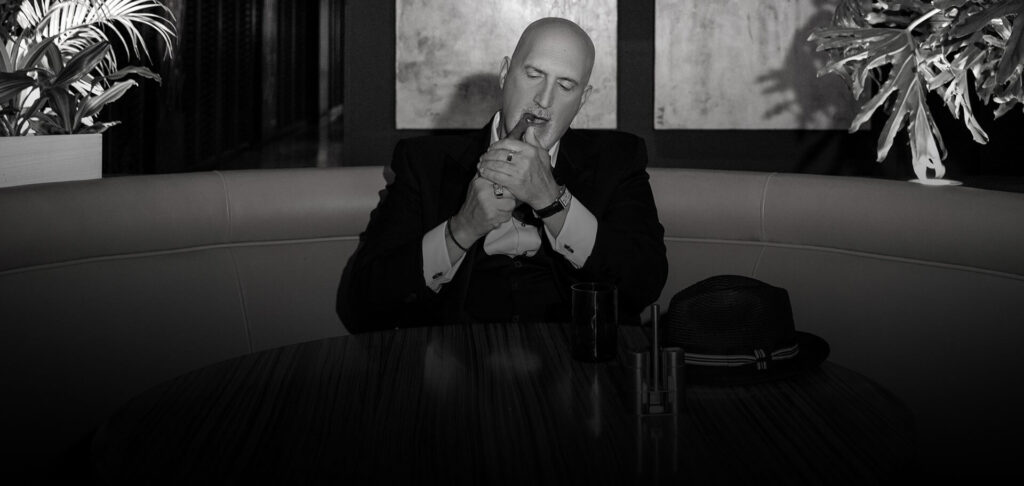
… and Freeing Your Mind is where to start!
When I think about “freedom” I think about something that goes beyond place and time.
For instance most folks think of freedom as:
The ability to do what they want, when they want, where they want, whenever they want … or something like that from my observations.
But, that presupposes something that is very typically missing more often than not … the fundamental ability to have a choice in the first place.
Ah, but there’s the rub …
To begin with to have a choice you must first be free of preconceived notions and knee-jerk responses, and so few of us are even a little bit free of those bits of installed mind programs.
From the very beginning, maybe even in the womb, we are being programmed with what to like or dislike, what is good or bad, what to desire or reject … and on and on. Yet we think the things we choose are our preferences most of the time, and not just pre-conditioned responses.
If only that were true …
I’m not here to tell you that your full of it … but I am here to tell you that you are full of pre-conceived notions and knee-jerk responses you think are choices and preferences. Heck, even the way you just responded to reading that last sentence probably falls into the category of pre-conceived notions and knee-jerk response.
Your “brain” ain’t your “mind” … at least not in the way I use those terms.
An easy analogy to use in making my point would be the distinction between “hardware” and “software” in a computing system.
The “hardware” part is analogous to the brain part in humans, the wetware that runs the “software” part.
This would include things like the brain and the central nervous system, and also things like the sense organs and the parts that comprise them as well, e.g.: your eyes, ears, nose, tongue and skin.
When thinking about the wetware connected to and part of the brain system as I’m using that terminology here the “hardware” mechanisms that provide the input and throughput for the compound senses like balance and proprioception are also part and parcel of what I’m referring to as wetware.
Then you have the “software” that runs on the “hardware,” which in the case of the human brain may be a configuration of the “hardware” itself.
The particular patterns of connections in the brain may be what comprise the programs we run, like the plugboards in early computers . In order to run an instruction set on these early computers wires would have to be physically rerouted to the appropriate connections on a plugboard with dozens or hundreds of fixed, pre-programmed microcircuits (see the image attached to this post above – Programming the ENIAC – Columbia University).
When the plugboard had the wires connected in a particular pattern the particular instruction set associated with that pattern would run, and only that instruction set. If you wanted to run a different calculation, based on a different instruction set, you would have to physically remove the wires from the plugs that linked the pre-programmed microcircuits in the existing order they were in to do it. Then you would have to re-route the wiring to the new configuration that provided the instruction set you now intended to run.
In many ways the human brain seems to be organized much like the early computers were with their pre-programmed microcircuits. Except in the case of the humans the preprogrammed microcircuits are the distinct patterns of neuron firing across the synapses that comprise the wetware of the brain.
The patterns of neural firing in the human brain are preprogrammed by virtue of familiarity. In the cognitive sciences we say that synapses that fire together wire together, meaning that the pattern of use determines the ease of recreating that pattern again.
The more a particular synaptic pattern fires the more it becomes myelinized. Myelin is the fatty sheathing that surrounds healthy nerves and facilitates the transmission of nervous impulses along their pathways. The better a nerve is myelinized the more easily, efficiently and effectively it seems that impulses are able to flow through it.
Nerves also seem to become more myelinized through repetitive use, i.e.: the more a particular pattern is used the more it becomes grooved in as the preferred pathway taken in response to a particular stimulus or category of stimuli. This allows us to build very rapid responses to common action scenarios when exposed to familiar stimuli or a category of stimuli, for example:
There is a particular way you tie your shoes, right lace over left lace first, or visa-versa. Doing it any other way feels unfamiliar and awkward. Yet, tying your shoe laces the way it’s been programmed is so familiar and comfortable it has likely become second nature, and you can probably do it at a pre-conscious level, while attending to something else on a more conscious level.
 Your choices aren’t only limited to the way you tie your shoes … and we’re not in Kansas anymore!
Your choices aren’t only limited to the way you tie your shoes … and we’re not in Kansas anymore!
So following the logic of the pre-programmed brain patterns we can begin to discuss, “What is the mind?”
In some ways I think it would be fair to consider the “mind” the patterns of neural connections in the “wetware” that we use in thinking consciously, pre-consciously, sub-consciously and trans-consciously.
These patters of wetware connections at one level are what thought is as we understand it today. However, there seems to be more to mind though than just the wetware connections, because we retain an ability to override the preferred patterns grooved into the wetware and do creative, impulsive, spontaneous and original things.
This ability to create unique responses is grounded in the brain (or the total configuration of the wetware in the body-at-large), and at the same time it exceeds the patterns previously organized in the wetware configuration and familiar within it.
Every time you respond as you have “without thinking” you are NOT expressing freedom or choice, you are expressing a pre-conceived notion or knee-jerk response grooved into the patterns in your wetware … like a pattern in the way the wires are configured in the plugboard of the ENIAC at any given time. In this way you are literally only capable of running the particular instruction set associated with that configuration in response to the presenting stimulus – you aren’t “thinking” you’re just following the actions associated with that instruction set.
Have a choice, or being free, requires you have options when acting in relation to any presenting stimulus.
So freedom isn’t being able to do what you want, when you want, where you want, whenever you want … unless you have a choice about doing it at all!
“FREEDOM” is a Mind Game … but you have to first take control of your brain to have access to your mind.
This is something I learned early on in my NLP days … to use a quote from Richard Bandler, one of the co-developers of NLP:
Brains aren’t designed to get results; they go in directions. If you know how the brain works you can set your own directions. If you don’t, then someone else will. – Richard Bandler (http://www.azquotes.com/quote/703363)
In Richard’s book, Using Your Brain For a Change: Neuro-Linguistic Programming says he’s going to give the reader “a manual for running the brain” and in my opinion gets at least part of the way there in his descriptions, instructions and examples.
One of the things that’s interesting to me about “Using Your Brain For a Change” is that Richard never really talks about the hardware as wetware as I have above. Instead of getting into the whole discussion about neural patterns as they operate at a physical level Richard spends all his time discussing our representations of reality, i.e.: how the patterns we make about the world and ourselves are organized.
In particular the discussion of how we organize our representations of reality in this book by Richard Bandler are focused on what he refers to as “submodalities” … unique distinctions about the elements of perception that determine how we make sense of what we perceive and what meaning we attach to those perceptions.
The submodalities of perception are organized into configurations, i.e.: “submodality configurations” that are more significant than any individual submodality standing apart from the pattern of the configuration as a whole.
Submodality configurations are comprised of two aspects that are equally important:
The Semantics of Submodalities: these are the way in which the particular submodality of perception is present in the representation of reality as it is known to you, e.g.: the unique color of someone’s eyes as you recall it and where you “see” that image in your mind’s eye, as well as the brightness, angle of view, distance from you and the way you hold the totality of the representation in regard to the visual image … as a photograph or video for instance.
The Syntax of Submodalities: this is the order or sequence in which the submodality configuration that forms your perception of reality is represented and attended to by you, e.g.: you can notice first the visual submodalities and then the auditory submodalities, or you might notice them in wholeform all at the same time as you would were they occurring in real time, and you might also notice the unique pattern of the submodality in stages as well, first noticing the color, then the brightness, then the angle and so on … and by virtue of the order or sequence the submodality configuration take on a logic unique to the syntax you use.
What Richard explores and examines in his work is both the semantics and syntax of “subjective experience” and how we can alter that for ourselves.
There is a powerful perceptual logic in the semantics and syntax of submodalities, and what’s unique to this logic to me is that it is non-linguistic, and therefore can be held and experienced in wholeform, i.e.: beyond the limits of language.
While language is always digital, with one element … a word, a sentence, a paragraph … distinct from the one before it and the one after, indeed from all other words, sentences and paragraphs, and by it’s very nature needing to be experienced separately from them, life occurs in wholeform, i.e.: all at a time, simultaneously.
Language is also always ordered sequentially and linearly, once more separating it from the experience of life, where many things can and do happen in simultaneity.
Submodalities are a kind of a bridge between the direct sensory experience of wholeform life as it happens and our processing of our conscious experience of life as what happened. They (submodalities) are magical, like the Old Norse runes, they are the elements from which we can conjure our subjective experience as we see fit.
“I, master of the runes conceal here runes of power. Incessantly plagued by maleficence, doomed to insidious death is he who breaks this monument. I prophesy destruction.” – Björketorp Runestone, 6th C. Sweden
Or one more, suggesting a runic use benevolently capable of giving life to the dead …
I know a twelfth one if I see,
up in a tree,
a dangling corpse in a noose,
I can so carve and colour the runes,
that the man walks
And talks with me.– Odin
Hávamál, Codex Regius 13 C.
The relationship between Subjective Experience … Freedom … and Choice/Choosing
Until we have access to how we are choosing what we are responding to and how we respond to it, we have little or no choice … and, without the option to choose we have no freedom.
Now here’s a critical distinction … we may not always be able to choose “what is” or the elements we are experiencing in our reality, but we always have options about what we choose to make of what we’re experiencing.
How we make sense of things and what we allow them to mean to us is always in our control … when we are able to access the process we use to make sense of and make meaning from the presenting stimulus of our subjective experience.
In this way, even when we are “objectively wrong” we get to choose our own experiences, and from there what and how we choose to respond to as it appears to us.
Here’s another Richard Bandler quote to tie things together:
The greatest personal limitation is to be found not in the things you want to do and can’t, but in the things you’ve never considered doing. – Richard Bandler (http://www.azquotes.com/quote/703366)
This is the essence of freedom (and mind) as far as I’ve concerned … i.e.: being about to choose what isn’t and hasn’t yet been.
Someone in prison who gets this idea fully can choose “FREEDOM” while doing the time of their sentence. Someone being beaten can choose to make it means something other than the loss of control of their experience.
Regardless, of the circumstance or situation if you can choose what something means to you, you can be free.
One of my favorite scenes of all time is from the 2006 James Bond movie “Casino Royale” with Daniel Craig, playing Bond. He’s being tortured by the criminal mastermind, Le Chiffre, played by the actor Mads Mikklesen. He’s in great pain and likely to be killed imminently in this particular scene:
Bond: I’ve got a little itch … down there. Would you mind? No! No! No! No. To the right. To the right. To the right!
Le Chiffre: You are a funny man, Mr. Bond.
Bond: (Laughing) Yeah! Yes, yes, yes. Now the whole world’s gonna know that you died scratching my balls.
Now that’s having control of one’s “subjective experience” and choosing in the most dire of circumstances!!!
In the end it ain’t what you can or can’t do … or be … it’s the choices you make with what you’ve got.
In the follow up to the scene from “Casino Royale” above Bond is next seen recuperating from his trauma in a hospital accompanied by his paramour in the film, Vesper, played by Eva Green. They are on a lawn and he is clearly weak and debilitated after his ordeal.
Vesper: Hello.
Bond: Hello.
Vesper: You all right? I can’t resist waking you. Every time I do, you look at me as if you haven’t seen me in years.
Bond: It makes me feel reborn.
Vesper: If you’d just been born …wouldn’t you be naked?
Bond: You have me there.
Vesper: You can have me anywhere.
Bond: I can?
Vesper: Yeah. Here, there, anywhere you like.
The scene continues a bit further in the dialogue …
Vesper: You know, James …I just want you to know that if all that was left of you … was your smile and your little finger … you’d still be more of a man than anyone I’ve ever met.
Bond: That’s because you know what I can do with my little finger.
Vesper: I have no idea.
Bond: But you’re aching to find out.
Vesper: You’re not going to let me in there, are you? You’ve got your armor back on. That’s that.
Bond: I have no armor left. You’ve stripped it from me. Whatever is left of me …whatever I am … I’m yours.
There’s something particularly remarkable in these two scenes to me.
There’s something particularly powerful about the nature of having control over one’s self, including the ability to let go … to be fully present to “what is” as well as one’s self and what one wishes to be experiencing in the moment, regardless of what the evidence is that is presenting itself in that moment.
I’d even argue that in terms of mythic form, in this moment captured by these actors, Bond is everyman and Vesper is everywoman … the ideal of the anima/animus as the blended being becoming whole and complete. Wonderful!
The conclusion I reach is that FREEDOM is more a powerful and potent force than PERFORMANCE.
Even though I make much of my living, and devote much of my life’s work to assisting others with mastery in terms of performance, i.e.: linking intention to action in terms of the results and outcomes they achieve, freedom is the real treasure … i.e.: having what you want as you want what you have.
Buona Fortuna & Abundanza,
Joseph Riggio, Ph.D.
New Hope, PA



